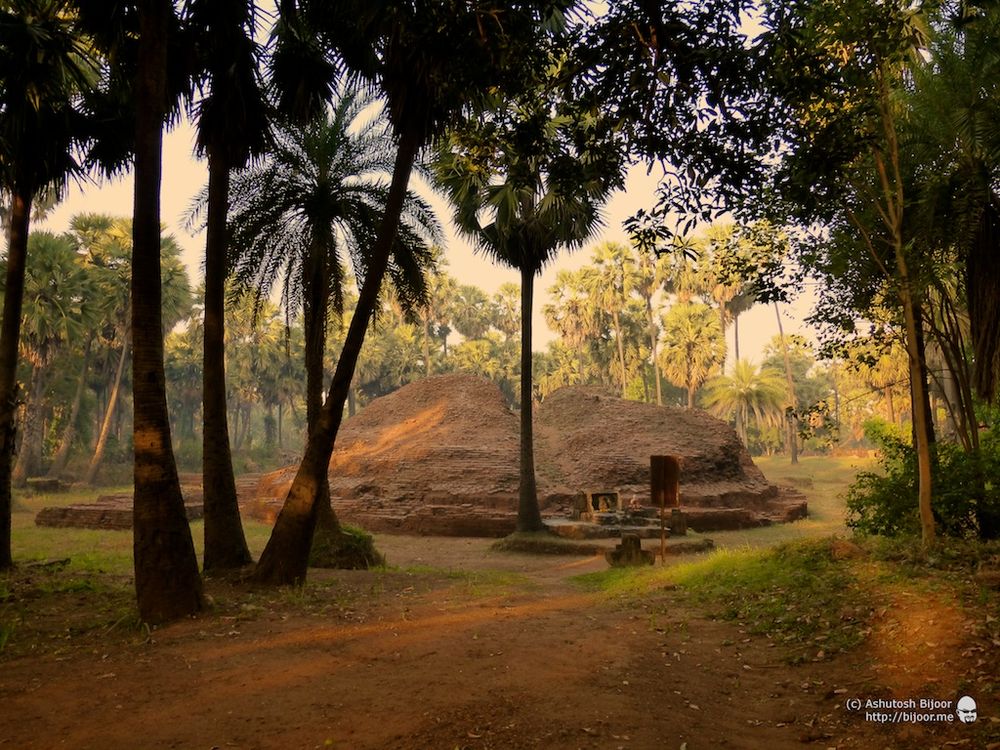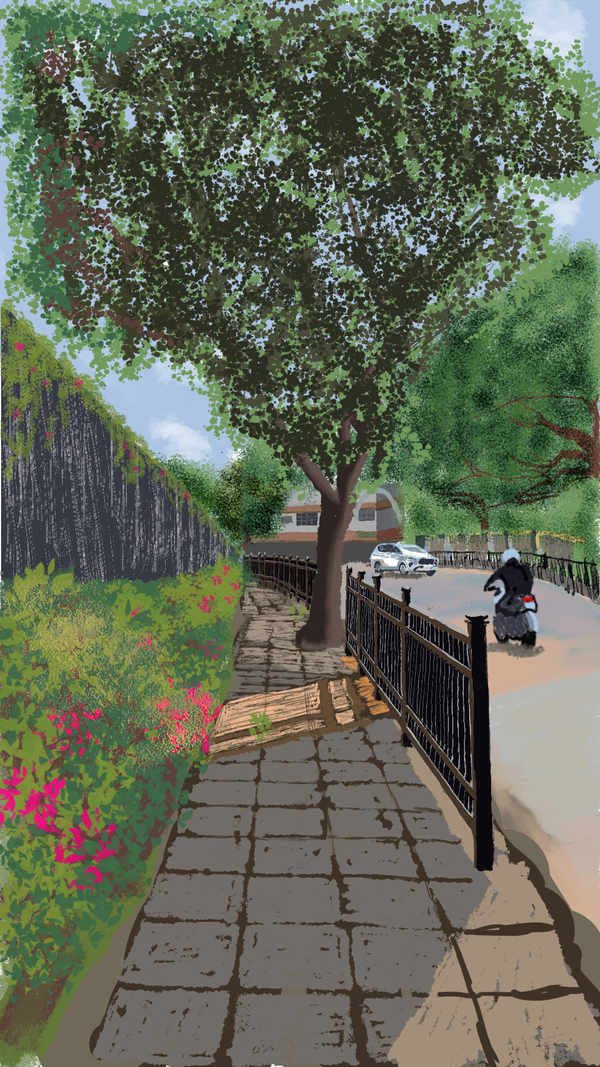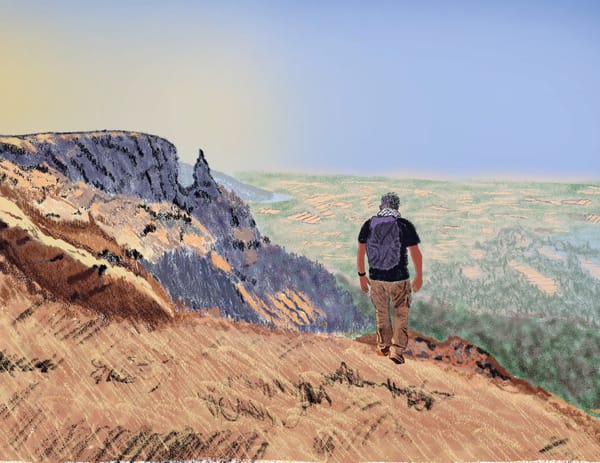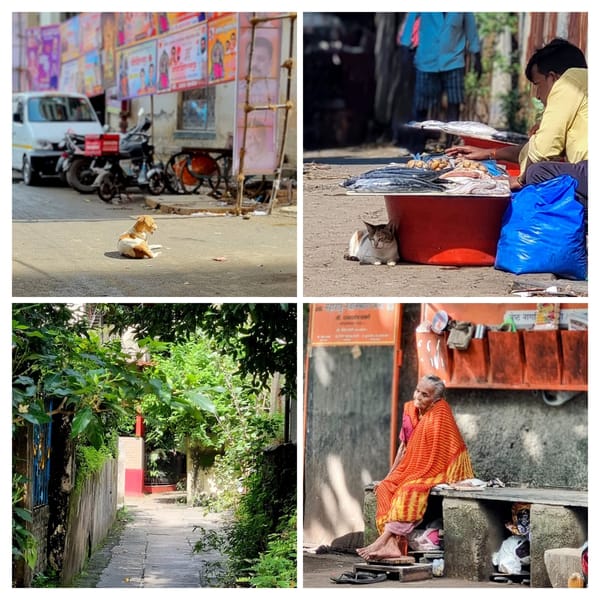Cycling to Nalasopara - Buddhist Stupa and Chakreshwar Mahadev Temple
Ever since I started the Mumbai Historical Sites Cycling Association project, I have started receiving a lot of feedback and suggestions on sites of historical significance in and around Mumbai.
A few months back, the multi-talented Shweta Gupta – nature lover, traveller, cyclist, professional patent agent and business development executive for a pharma company and who is also studying archaeology wrote to me:
hi!! keep reading yr blog about u cycling to heritage places around mumbai
recently visited a temple close to chakreshwar talav in nalasopara which has a few 9th century idols & also one agni idol probably dated to 2nd century
thought it might interest u to cycle there
I did a little more digging around about Nalasopara and also came to know about a Buddhist Stupa that is located there. Two historical sites close to each other was just too good to miss. So earlier this month, I set out cycling to explore Nalasopara.
Sopara or Shurparaka finds mention in the Mahabharata (1400 B.C.) as a very holy place that the Pandavas rested enroute from Gokarn in north Kanara to Prabha or Verval in Kathiawad and was also an important and one of the oldest ports and ship building yards. It was also the capital in the Satavahana period (around 4th or 5th BC) and a cultural centre. One of the first Buddhist centers in western India, very few remnants of its original antiquity survive, with almost no trace of the Buddhist period and archival records mention a rich and architectural vibrant town with fine details
The round trip distance from Andheri to Nalasopara is just over 100 kilometers, and is perfect for a day’s outing. I started at 5:30 am on a Saturday and reached Nalasopara within 2 hours thanks to a traffic free Western Express Highway. Then I had to ask around to locate the Chakreshwar Mahadev Temple
 The temple lies at one corner of the Chakreshwar lake in Nalasopara West. The main temple itself has been reconstructed, but the structure in this picture is the Akkalkot Swami Math with the samadhi of Swami Mayuranand
The temple lies at one corner of the Chakreshwar lake in Nalasopara West. The main temple itself has been reconstructed, but the structure in this picture is the Akkalkot Swami Math with the samadhi of Swami Mayuranand
 The math is constructed of wooden beams and pillars with a tiled roof. The inside of the math was nice and peaceful and quite clean. I could imagine this being a scene of all night bhajan singing with the loud dining of cymbals and pakhawaj
The math is constructed of wooden beams and pillars with a tiled roof. The inside of the math was nice and peaceful and quite clean. I could imagine this being a scene of all night bhajan singing with the loud dining of cymbals and pakhawaj
 A small verandah on the outside houses another diety with two stone carved figures on either side. Though situated in the middle of the busy town, this was such a peaceful retreat overlooking the Chakreshwar lake!
A small verandah on the outside houses another diety with two stone carved figures on either side. Though situated in the middle of the busy town, this was such a peaceful retreat overlooking the Chakreshwar lake!
 Outside the math along the compound wall are a row of stone carvings. Legend has it that these were all retrieved from the lake, presumably as a result of destruction of the original temple by the Portuguese who apparently destroyed most of the temples in the Bassein area after they took it over from the Sultan Bahadur Shah of Gujarat in the treaty of 1533 for helping him to counter the threat posed by the Mughals
Outside the math along the compound wall are a row of stone carvings. Legend has it that these were all retrieved from the lake, presumably as a result of destruction of the original temple by the Portuguese who apparently destroyed most of the temples in the Bassein area after they took it over from the Sultan Bahadur Shah of Gujarat in the treaty of 1533 for helping him to counter the threat posed by the Mughals
 Carved statue of Lord Shiva and Parvati with their son Ganesh on Parvati’s left and Naga the serpent God over Lord Shiva’s head
Carved statue of Lord Shiva and Parvati with their son Ganesh on Parvati’s left and Naga the serpent God over Lord Shiva’s head
 A “hero stone” that depicts the death of a hero – a Shaivite – shown lying at the bottom – with two chambers above where a man on the left and a woman on the right are praying to a Linga
A “hero stone” that depicts the death of a hero – a Shaivite – shown lying at the bottom – with two chambers above where a man on the left and a woman on the right are praying to a Linga
 This carving is of Gajalaxmi – Lakshmi with elephants, is one of the most significant Ashtalakshmi aspects of the Hindu goddess Lakshmi. In this aspect, the goddess is depicted seated on a lotus, flanked on both side by an elephant (gaja). She is shown as seated in Padmasana yogic posture, and has four arms. In each of her upper pair of arms, she carries a lotus, and the lower hands are generally shown in abhya and varadamudra. The elephants flanking her are shown as pouring water from their trunk over the goddess. This aspect like most other aspects of Lakshmi is representative of prosperity, good luck, and abundance
This carving is of Gajalaxmi – Lakshmi with elephants, is one of the most significant Ashtalakshmi aspects of the Hindu goddess Lakshmi. In this aspect, the goddess is depicted seated on a lotus, flanked on both side by an elephant (gaja). She is shown as seated in Padmasana yogic posture, and has four arms. In each of her upper pair of arms, she carries a lotus, and the lower hands are generally shown in abhya and varadamudra. The elephants flanking her are shown as pouring water from their trunk over the goddess. This aspect like most other aspects of Lakshmi is representative of prosperity, good luck, and abundance
 This figure is that of Harihara – a combination of Shiva and Vishnu. Exquisitely carved, it has a unique crown that has two skulls, what looks like a serpent coiled, and a single fish at the top. This resembles the description of Mahakala – who wears a crown with skulls.
This figure is that of Harihara – a combination of Shiva and Vishnu. Exquisitely carved, it has a unique crown that has two skulls, what looks like a serpent coiled, and a single fish at the top. This resembles the description of Mahakala – who wears a crown with skulls.
 The most impressive is this idol of Brahma with four faces that represent the four Vedas (Ṛig, Sāma, Yajur and Atharva). The two faces on either side are hidden by the garland and the fourth one is behind and not shown. The beard and crown of Brahma are clearly visible and crafted in an exquisite style. Compare this with the Trimurti at Elephanta to see the difference in the sculpture styles. Prof. Kurush Dalal adds: “This is a very famous icon of Brahma from Chakreshwar tirtha … The four bearded heads and the ayudhas of Brahma are a dead give away. Ayuddhas … Sruk or Pali the ladle used for pouring ghee on the sacrificial fires, the palm leaf manuscripts of the four Vedas, the rosary of beads and the kamandalu”
The most impressive is this idol of Brahma with four faces that represent the four Vedas (Ṛig, Sāma, Yajur and Atharva). The two faces on either side are hidden by the garland and the fourth one is behind and not shown. The beard and crown of Brahma are clearly visible and crafted in an exquisite style. Compare this with the Trimurti at Elephanta to see the difference in the sculpture styles. Prof. Kurush Dalal adds: “This is a very famous icon of Brahma from Chakreshwar tirtha … The four bearded heads and the ayudhas of Brahma are a dead give away. Ayuddhas … Sruk or Pali the ladle used for pouring ghee on the sacrificial fires, the palm leaf manuscripts of the four Vedas, the rosary of beads and the kamandalu”

 The main temple is completely rebuilt with modern construction materials in quite bad taste and the old temple structure is completely destroyed. There is a Linga in the main sanctum sanctorium. The Nandi statue outside however seems to be an old sculpture.
The main temple is completely rebuilt with modern construction materials in quite bad taste and the old temple structure is completely destroyed. There is a Linga in the main sanctum sanctorium. The Nandi statue outside however seems to be an old sculpture.
 After seeing Chakreshwar Mahadev Temple, I went further ahead to see the Buddhist Stupa. In April 1882 Pandit Bhagvanlal Indraji undertook excavation of this mound locally known as Burud Rajacha Kot, or the fort of the Basket-making king.
After seeing Chakreshwar Mahadev Temple, I went further ahead to see the Buddhist Stupa. In April 1882 Pandit Bhagvanlal Indraji undertook excavation of this mound locally known as Burud Rajacha Kot, or the fort of the Basket-making king.
 The mound, which is about 65 yards round the base, rises about 17 feet with steps from the eastern side. Among the relics found here were a stone treasury containing gold ornaments and eight bronze statutes of Buddha. Later in 1956 the 8th and 9th stone tablet of Ashoka was also found nearby, clearly demonstrating that Sopara – earlier called Suparak was a major Buddhist settlement in western India
The mound, which is about 65 yards round the base, rises about 17 feet with steps from the eastern side. Among the relics found here were a stone treasury containing gold ornaments and eight bronze statutes of Buddha. Later in 1956 the 8th and 9th stone tablet of Ashoka was also found nearby, clearly demonstrating that Sopara – earlier called Suparak was a major Buddhist settlement in western India
 Prof. Kurush Dalal clarified that this is a votive stupa of around the 8th c AD. A votive stupa is constructed to commemorate visits or to gain spiritual benefits, usually at the site of prominent stupas which are regularly visited (ref)
Prof. Kurush Dalal clarified that this is a votive stupa of around the 8th c AD. A votive stupa is constructed to commemorate visits or to gain spiritual benefits, usually at the site of prominent stupas which are regularly visited (ref)
 The highlight of my visit was this altar of sorts containing a small statue of the Buddha in a rectangular compartment, and another one outside that seems a newer statue that looks a bit out of place in this setting
The highlight of my visit was this altar of sorts containing a small statue of the Buddha in a rectangular compartment, and another one outside that seems a newer statue that looks a bit out of place in this setting
 As I was standing there, the sun rays started shining exactly on the face of the Buddha statue, giving it a holy glow!
As I was standing there, the sun rays started shining exactly on the face of the Buddha statue, giving it a holy glow!
 Prof. Kurush Dalal explains: “This structure is called a Bharvaka. it is a pillar capital now lying at a 90 degree angle, 1, 2, 3, 4 or rarely even five sides have these ganas holding up the roof and carved on these capitals of pillars in temples of the early medieval period”. Seems like more excavation at this site could yield a lot more treasure! Behind this you can see a row of benches that are installed for locals to enjoy their evenings.
Prof. Kurush Dalal explains: “This structure is called a Bharvaka. it is a pillar capital now lying at a 90 degree angle, 1, 2, 3, 4 or rarely even five sides have these ganas holding up the roof and carved on these capitals of pillars in temples of the early medieval period”. Seems like more excavation at this site could yield a lot more treasure! Behind this you can see a row of benches that are installed for locals to enjoy their evenings.
 A rickety board outside the complex describes the history of the place as follows… “Sopara was historically called as Shurparaka. About 2500 years ago, a trader named Poorna constructed this Stupa in reverence of Lord Gautam Buddha. The stupa was decorated with carvings made in Sandalwood. This Stupa is identical to the one in Sanchi in Madhyapradesh. The inauguration of this Stupa was done by Lord Gautam Buddha himself. On 1st April 1882, historical investigator Pandit Bhagwandas Indraji started excavations at this site and uncovered a stone treasury containing eight idols of the Buddha, gold ornaments, gold, silver, etc. The great king Ashoka’s kingdom had in all 14 stone tablets in various parts. Of these, the 8th and the 9th tablets were found in Sopara. King Ashoka’s son Prince Mahendra and daughter Sanghamitra had travelled from Bodh Gaya to Sri Lanka with branches of the Bodhi Tree and had passed via Sopara on their journey. Later, Dr. Babasaheb Ambedkar had also visited this site several times. Today this Stupa stands as mute evidence of an era gone by. The site is declared as a protected national site by the Government of India.
A rickety board outside the complex describes the history of the place as follows… “Sopara was historically called as Shurparaka. About 2500 years ago, a trader named Poorna constructed this Stupa in reverence of Lord Gautam Buddha. The stupa was decorated with carvings made in Sandalwood. This Stupa is identical to the one in Sanchi in Madhyapradesh. The inauguration of this Stupa was done by Lord Gautam Buddha himself. On 1st April 1882, historical investigator Pandit Bhagwandas Indraji started excavations at this site and uncovered a stone treasury containing eight idols of the Buddha, gold ornaments, gold, silver, etc. The great king Ashoka’s kingdom had in all 14 stone tablets in various parts. Of these, the 8th and the 9th tablets were found in Sopara. King Ashoka’s son Prince Mahendra and daughter Sanghamitra had travelled from Bodh Gaya to Sri Lanka with branches of the Bodhi Tree and had passed via Sopara on their journey. Later, Dr. Babasaheb Ambedkar had also visited this site several times. Today this Stupa stands as mute evidence of an era gone by. The site is declared as a protected national site by the Government of India.
 At the nearby road junction, a small park also contains this impressive sculpture of the Buddha that seems too well formed to be of the same generation as the Stupa
At the nearby road junction, a small park also contains this impressive sculpture of the Buddha that seems too well formed to be of the same generation as the Stupa
 On the way back, I stopped at a small restaurant in town called “Pure Vegetarian Hindu Hotel” where I enjoyed some missal pav before heading back to Andheri
On the way back, I stopped at a small restaurant in town called “Pure Vegetarian Hindu Hotel” where I enjoyed some missal pav before heading back to Andheri
 On the way back I stopped to enjoy the view of the Vasai creek just before hitting the Ghodbunder Road junction.
On the way back I stopped to enjoy the view of the Vasai creek just before hitting the Ghodbunder Road junction.
 The creek, or actually the mouth of Ulhas river looks serene and calm and on the left you can see the Nagle Nature Trail – another great location for off-road cycling
The creek, or actually the mouth of Ulhas river looks serene and calm and on the left you can see the Nagle Nature Trail – another great location for off-road cycling
I was back home in time for lunch, satisfied with another location ticked off on my list of historical sites in and around Mumbai! Special thanks to Shweta Gupta for not only recommending this location, but helping in identifying the various sculptures – looking forward to consulting her for her expertise and interest in archeology to add more value in future!




